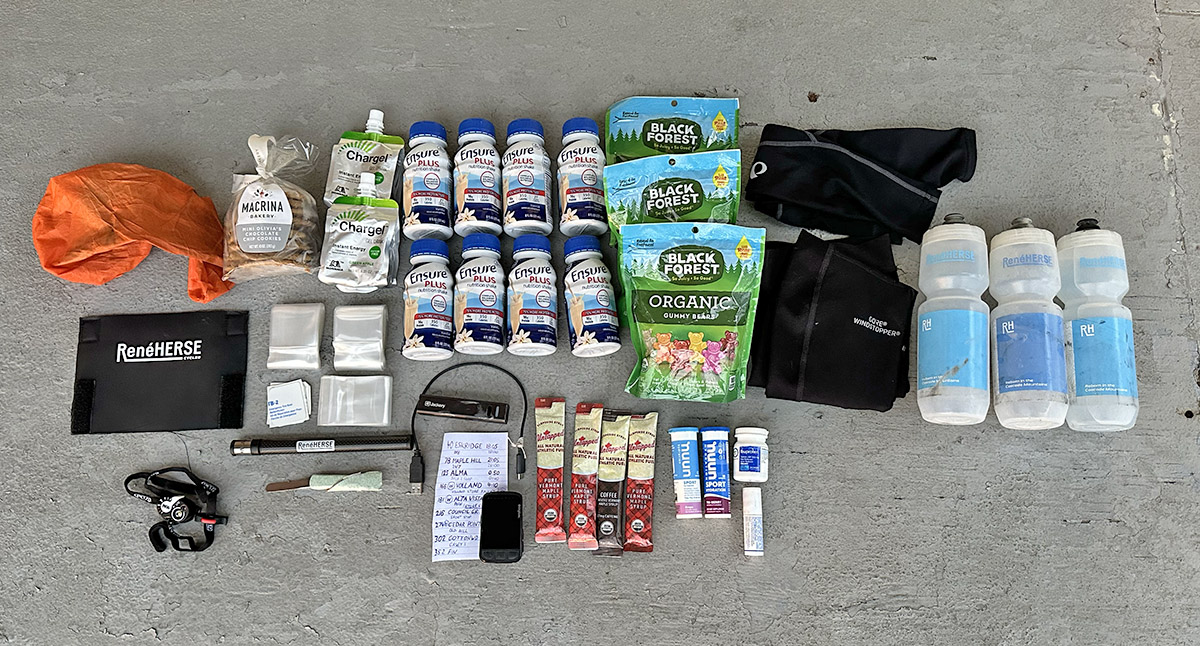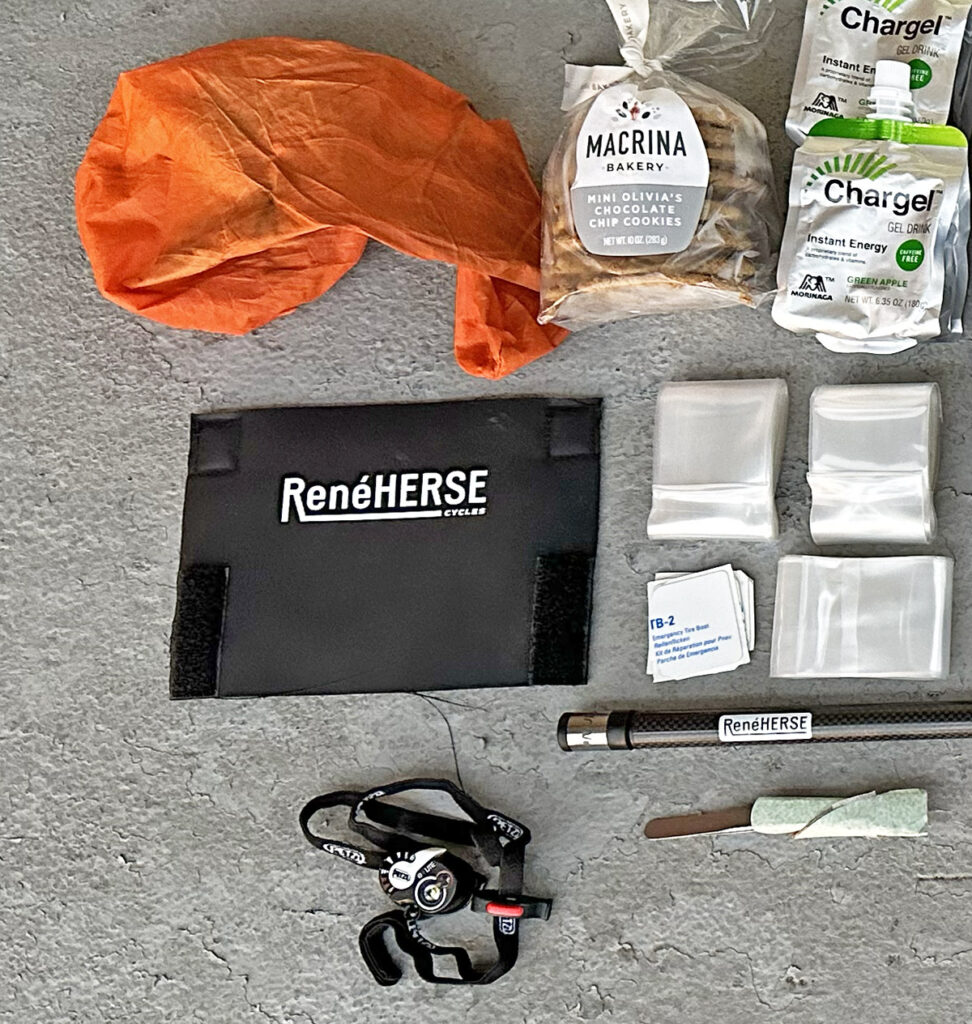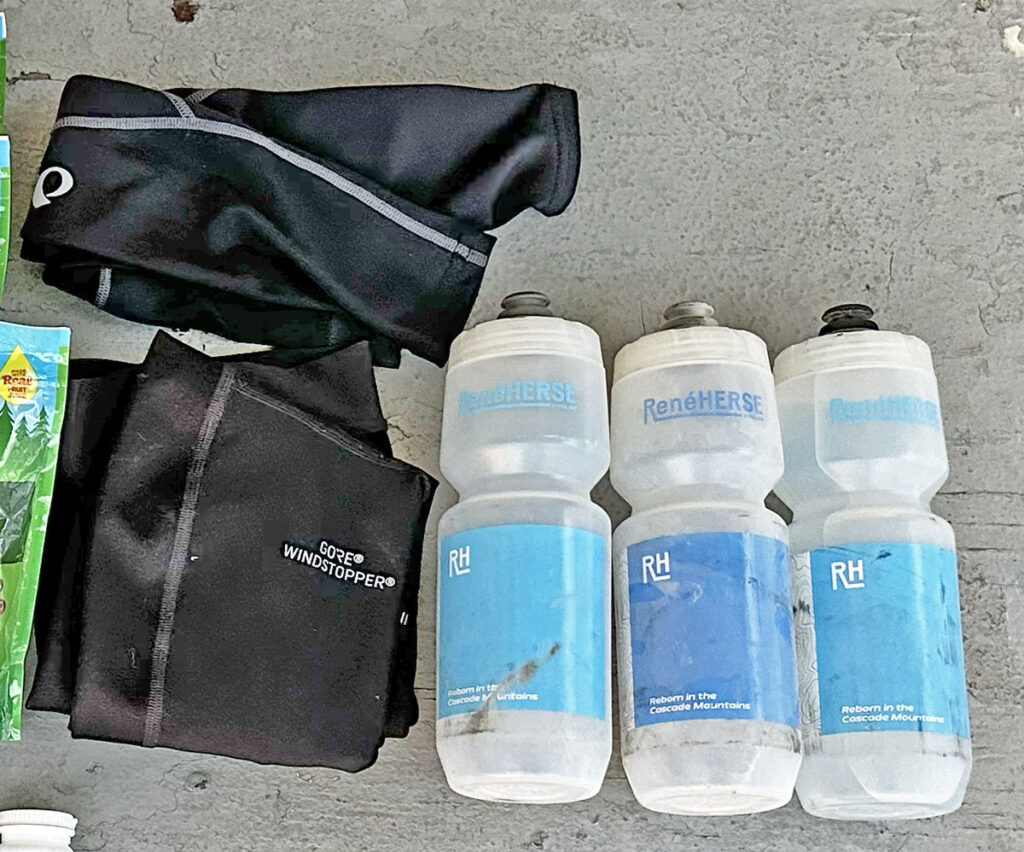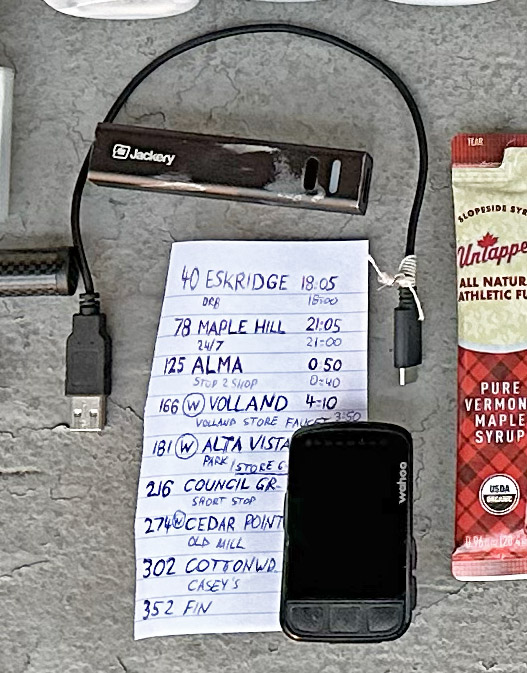Unbound XL: Packing List and Tracker
What do you pack for a 350-mile gravel race into the Flint Hills of Kansas? There are two philosophies:
- Pack light and buy what you need on the road. That’s the classic bikepacking strategy. For races that last a week or longer, you simply have to resupply on the road.
- Bring most of what you need, so you can keep your stops short. For single-push events that take 48 hours or less, that is an option.
My usual strategy is mostly the latter, something that’s also born out of necessity: Many areas in the Cascade Mountains are very remote, and resupplying is simply not an option. When Unbound XL starts at 3 p.m. Central Time, what you see here will be in my handlebar bag.
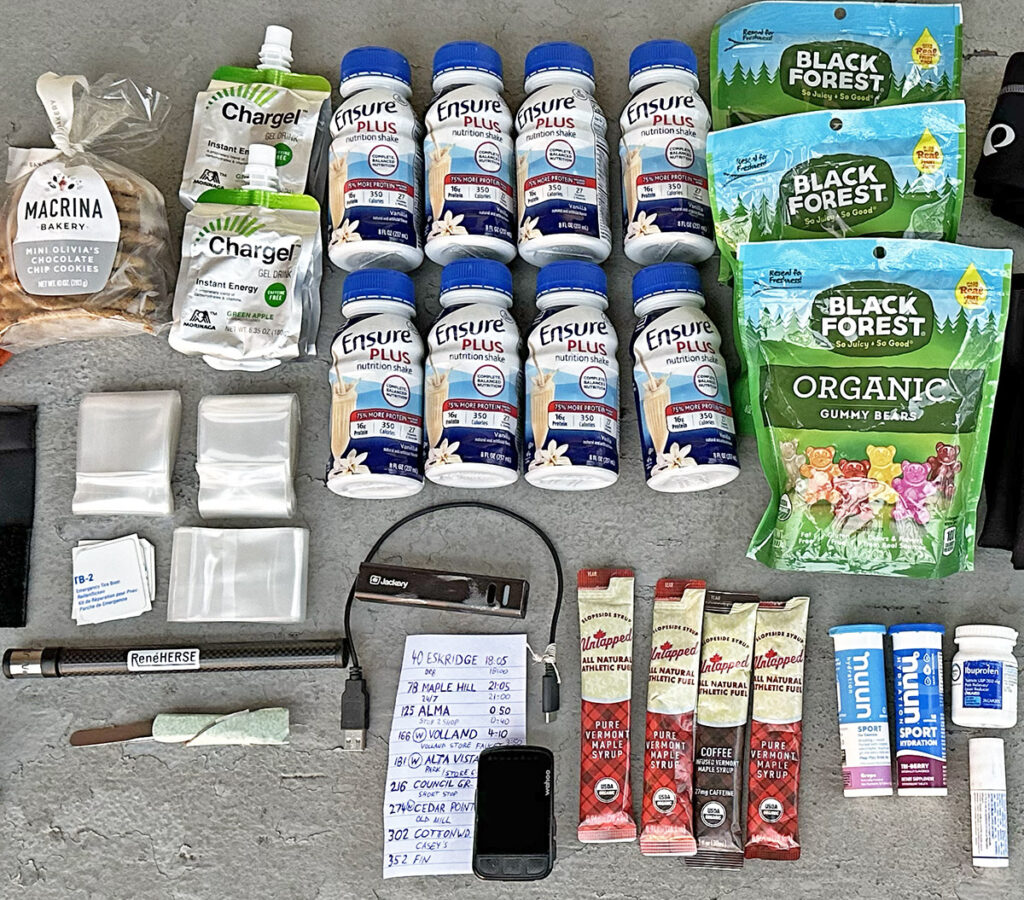
Most of it is food—about 7,500 kcal in total. Ultra racing isn’t exactly gourmet travel—when your stomach needs to process 250-300 kcal per hour for 27 hours or more, the foods need to be simple and easy to digest, yet appealing enough to go down even when you are tired.
Riding on rough gravel, I find it essential to carry liquid food in a bottle, so I can add calories frequently without having to slow down. That’s where the Ensure Plus goes. (Three of the small bottles fill one water bottle.) The chocolate chip cookies add some ‘real’ food, to be enjoyed during calm moments when I can sit up. (I’ll remove the ribbon before the start.) The Japanese energy gels are easy to down even when it’s hot. Gummies with real fruit are fast calories and contain some electrolytes. And Ted King’s Untapped Maple packages are perfect when I need a boost. Nuun electrolyte tablets go into my water bottles. The second vial actually holds electrolyte capsules that I take when it’s hot, or when I feel I need more electrolytes. Lip balm is essential on long rides. I hope I won’t need the Ibuprofen.
I’m carrying three TPU tubes as spares, plus a few tire boots, cut in half because the standard size is way bigger than any tire gash. My bike is equipped with a frame pump, but the little NUDA weighs so little (30 g) that it makes sense to carry it just in case the big pump breaks or gets lost on the rough gravel. Tweezers are essential if a thorn or piece of wire gets stuck in one of my tires. I’m carrying big ones that are also useful to scrape mud off the bike. The sharp points are wrapped in cardboard to prevent damage to the other contents of my bag. I got for years without needing the tweezers (or the tire boots), but they weigh little and are good insurance. Not shown are five zip-ties that weigh next-to-nothing and may come in handy, if only to rig up a mud scraper if needed.
The frame pad is for long portages—if the roads get too muddy to ride—so the top tube doesn’t dig into my shoulder. The saddle cover protects my leather saddle if it rains—like most gravel bikes, mine doesn’t have fenders. (The ‘shorty’ fenders are for aerodynamics. They don’t keep water off me or the saddle.) I don’t carry any other tools, as there’s nothing that’s likely to come loose on the bike. The tiny helmet light illuminates the route sheet and helps with night-time repairs. (Knock on wood.)
Kansas nights are warm, so arm and leg warmers are all I carry, plus a lightweight rain shell that didn’t make it into the photo. For mountainous races, like the Arkansas High Country Race, I bring a long-sleeve wool jersey, too. Two of the bottles are for water (with electrolytes), one is for liquid food. The bottle under the down tube can get muddy. When I start using it, I swap the lids to put a (mostly) clean one on the bottle I drink from.
The GPS has a run time of about 12-15 hours, so a separate power bank allows recharging it about 3 to 4 times. The cue sheet is minimal: It lists the resupply stops and a rudimentary schedule. It’s easy to read at night while the bike is vibrating on rough gravel. There are many unknowns in a race like this, so I don’t even try to plan precisely. Having a schedule at all helps me figure out when I’ll reach the next supply stop. The mental math of adding or subtracting the time I am ahead or behind this schedule helps keep me awake.
All this looks like a lot of stuff, but the weight disappears when it’s on the bike. Also, three of those Ensure bottles go in a water bottle from the start. As the ride goes on, my load lightens, which (hopefully) helps offset my fatigue. I find it more efficient to carry most of what I need than foraging for food—especially since I often tend to eat too little if I do. I know other riders who are more efficient at resupplying in gas stations and convenience stores.
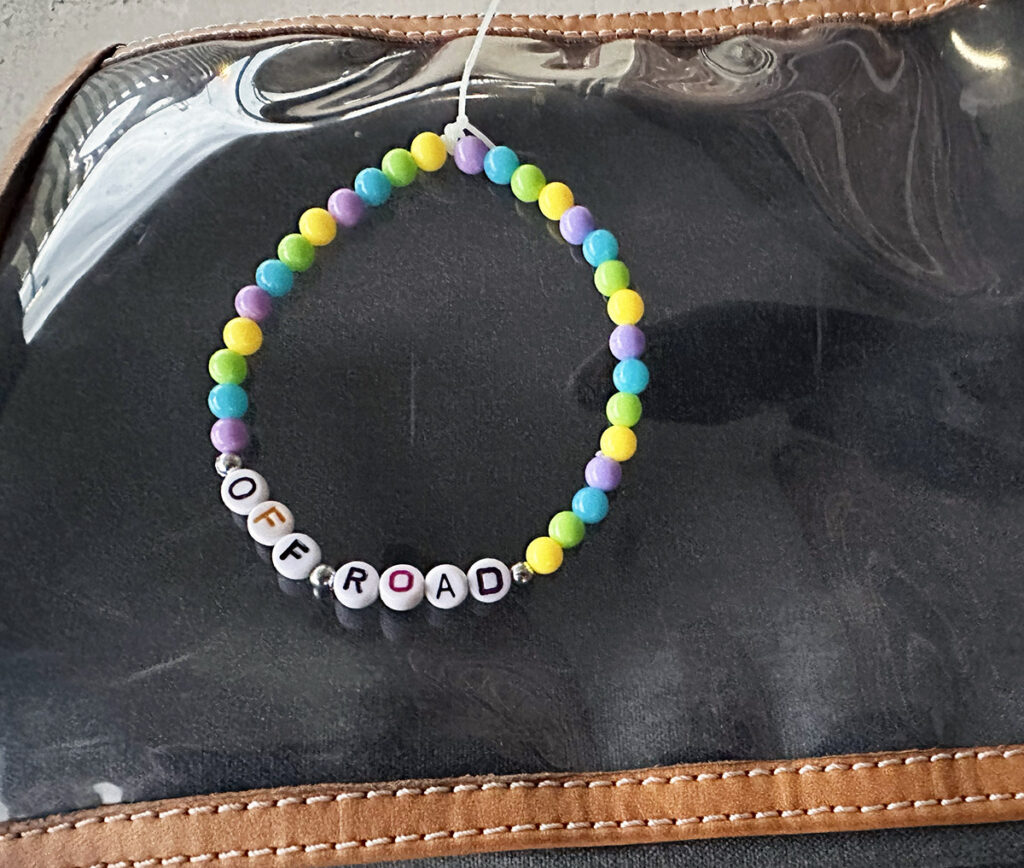
There’s one more thing that’ll go in my bag. In Emporia today, I met many readers and customers who are riding and racing this weekend. One couple gave me a Good Luck bracelet, made by her mother. It’ll make me smile when I see it in the map pocket on top of my bag.
You can follow the race at
https://trackleaders.com/unboundxl24f.php
And if you’ve missed the previous Unbound entries in the Journal:


